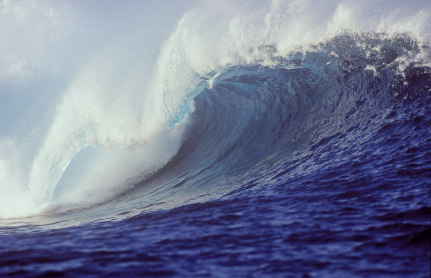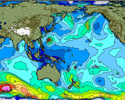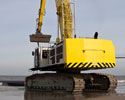Wind and Weather
The Hemispheres and Surf
 Knowing what creates surf is just as important as knowing what to ride when good surf arrives. Any surfer that has done a bit of traveling knows that some spots are decent year around while others are only going off a few months of the year. You might have even noticed that many of the most fickle spots are in the Northern Hemisphere. The reasoning has to do with winds, wave formation and land distribution.
Knowing what creates surf is just as important as knowing what to ride when good surf arrives. Any surfer that has done a bit of traveling knows that some spots are decent year around while others are only going off a few months of the year. You might have even noticed that many of the most fickle spots are in the Northern Hemisphere. The reasoning has to do with winds, wave formation and land distribution.
The story begins when the Sun’s energy enters the Earth’s atmosphere. This energy heats surface air, alters our weather, and creates the number one factor in wave creation, wind! This surface air moves along the water, transferring its energy to the seas, eventually turning into the almighty swell. Let’s explore how this begins.
At the heart of the matter is the fact that the Sun’s energy does not heat the poles and the equator evenly. According to the book Surf Science (no relation—ed.), written by Tony Butt and Paul Russell, the atmosphere tries to counteract the effects of this inequality by attempting to redistribute the heat evenly. It follows the following sequence. As surface air heats, it expands and becomes less dense in the process. It then rises through the process of convection, leaving a gap. The cooler air then rushes in from the poles to fill this gap, creating wind in the process.
As Earth’s seasons change, so do the differences in temperature between the poles and the equator. In February, for example, the difference in temperature between the North Pole and the equator is quite large. When you remember that air movement is caused by uneven heating, you know why the Northern Hemisphere’s winter months have more wind and bigger surf than the summer months, when the difference between pole temperature and equator temperature is not as great.
So why does The Southern hemisphere have more consistent surf? Pretty cool reasons, actually. For one, the Southern hemisphere does not experience such extreme seasonal variation as the Northern hemisphere. This means they don’t get huge winter swells coming through like the ones that feed Mavericks and Waimea Bay, but they also don’t get the Summer time blues. On the bright side, there is less land in the Southern hemisphere to break up winds. This results in a larger fetch, defined as the length of sea surface for wind to blow over without interruption. The larger the fetch, the larger the swell.
So next time you're suffering a 9 month dry spell on the North Shore of Oahu, remember that Perth gets decent waves year around, but you get the best in the world for a few months in the winter. Its just science.







0 Comments